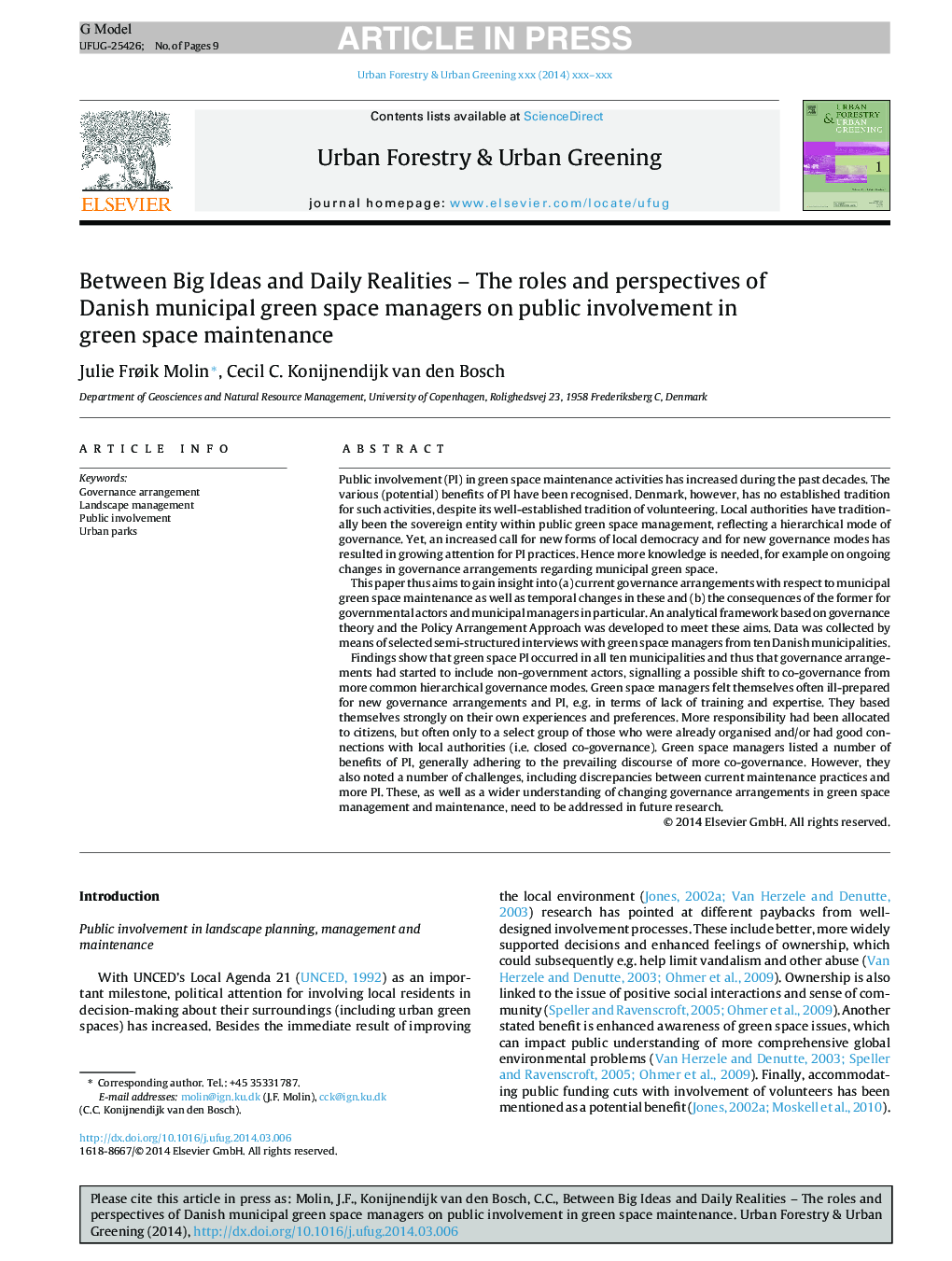| Article ID | Journal | Published Year | Pages | File Type |
|---|---|---|---|---|
| 10252266 | Urban Forestry & Urban Greening | 2014 | 9 Pages |
Abstract
Findings show that green space PI occurred in all ten municipalities and thus that governance arrangements had started to include non-government actors, signalling a possible shift to co-governance from more common hierarchical governance modes. Green space managers felt themselves often ill-prepared for new governance arrangements and PI, e.g. in terms of lack of training and expertise. They based themselves strongly on their own experiences and preferences. More responsibility had been allocated to citizens, but often only to a select group of those who were already organised and/or had good connections with local authorities (i.e. closed co-governance). Green space managers listed a number of benefits of PI, generally adhering to the prevailing discourse of more co-governance. However, they also noted a number of challenges, including discrepancies between current maintenance practices and more PI. These, as well as a wider understanding of changing governance arrangements in green space management and maintenance, need to be addressed in future research.
Related Topics
Life Sciences
Agricultural and Biological Sciences
Forestry
Authors
Julie Frøik Molin, Cecil C. Konijnendijk van den Bosch,
